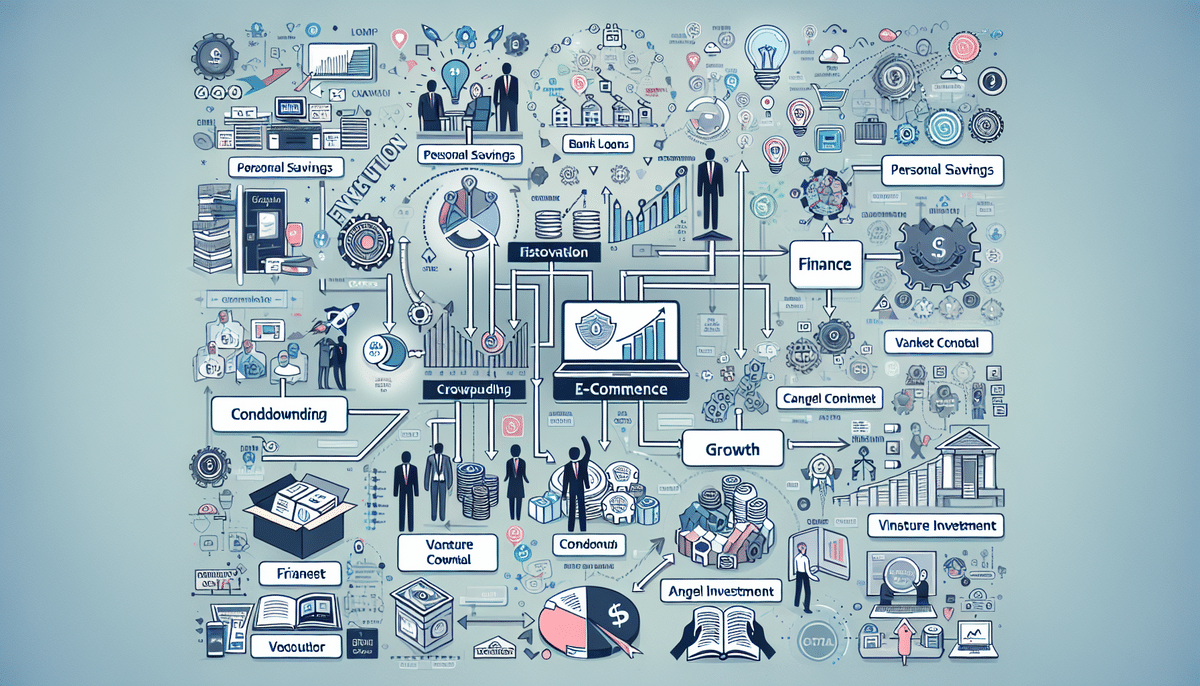The Financial Implications of Bringing Operations In-house
As businesses grow, they often consider bringing their operations in-house. This decision can have significant financial implications and requires careful consideration. In this article, we will explore the pros and cons of in-house operations, analyze the costs involved in making the move, and provide strategies for financing in-house operations. Additionally, we will discuss key considerations to keep in mind before making this significant decision.
Pros and Cons of In-house Operations
Advantages of Bringing Operations In-house
Implementing in-house operations can offer several benefits, including:
- Greater Control: Managing operations internally allows businesses to have tighter control over the quality, timing, and cost of products or services.
- Increased Efficiency: Streamlined processes and better communication can lead to faster turnaround times and improved customer satisfaction.
- Competitive Advantage: Enhanced control and efficiency can provide a competitive edge in the marketplace.
Disadvantages of In-house Operations
However, bringing operations in-house also comes with potential drawbacks:
- Higher Initial Costs: Significant capital investments may be required for hiring, training, and purchasing equipment.
- Lack of Flexibility: Scaling operations up or down can be more challenging compared to outsourcing.
- Resource Allocation: Businesses must dedicate substantial resources to manage and maintain in-house operations effectively.
Understanding the Costs Involved
Key Cost Factors
Before deciding to bring operations in-house, it's essential to understand the various cost components:
- Real Estate and Facilities: Costs include rent, utilities, and property taxes for office and workspace.
- Equipment and Technology: Expenses related to purchasing, maintaining, and upgrading machinery, hardware, and software.
- Employee Salaries and Benefits: Competitive salaries and benefits packages are necessary to attract and retain qualified employees.
- Training and Development: Ongoing training is required to equip employees with necessary skills and knowledge.
Long-term Cost Savings
While the initial investment can be substantial, in-house operations may lead to long-term cost savings by eliminating outsourcing fees and improving operational efficiency. According to a McKinsey report, companies that manage operations internally often see increased profitability due to streamlined processes.
Calculating the Return on Investment (ROI)
Determining the potential ROI is crucial to justify the costs associated with in-house operations. This involves estimating the revenue and cost savings over time compared to the initial investment:
- Revenue Projections: Forecasted income generated from increased efficiency and better quality control.
- Cost Savings: Reduction in outsourcing fees and operational costs.
- Initial Investment: Total upfront costs required to establish in-house operations.
Regularly updating ROI calculations ensures that the operations remain financially viable. Tools like ROI calculators can assist businesses in this analysis.
Budgeting for In-house Operations
Developing a Financial Plan
Creating a detailed financial plan is essential for budgeting in-house operations. This plan should include:
- Revenue forecasts based on projected growth and efficiency gains.
- Expense estimates covering all operational costs.
- Cash flow projections to ensure liquidity throughout the transition.
Contingency Funding
Setting aside contingency funds can help manage unexpected costs and delays, ensuring that in-house operations remain sustainable. According to the Small Business Administration, having a financial buffer is critical for navigating unforeseen challenges.
Avoiding Common Pitfalls
Cost Management
One common mistake is underestimating the costs involved. Accurate budgeting and financial planning are essential to avoid project derailments.
Realistic Expectations
Overestimating the benefits of in-house operations can lead to disappointment. It's important to set achievable goals and remain realistic about potential outcomes.
Investment in Technology
Failing to invest in the latest technology can result in operational inefficiencies and a competitive disadvantage. Keeping up with technological advancements is crucial.
Managing the Human Element
Effective communication and change management are vital to ensure a smooth transition for employees. Neglecting the human aspect can negatively impact morale and productivity.
Key Considerations Before Moving In-house
Alignment with Business Strategy
In-house operations should align with the overall business strategy, providing a competitive advantage and supporting long-term goals.
Feasibility and Expertise
Assess whether the business has the necessary expertise and resources to manage operations internally. Complex operations may require specialized knowledge that the current team lacks.
Risk Assessment
Evaluate the potential risks, such as equipment failures or employee turnover, and develop contingency plans to mitigate these risks.
Timing and Market Conditions
Consider whether the current market conditions and business climate are favorable for bringing operations in-house. Timing can significantly impact the success of the transition.
Impact on Cash Flow and Profitability
Short-term vs. Long-term Financial Effects
In-house operations can lead to a short-term cash flow crunch due to initial investments but may result in increased profitability over the long term through cost savings and efficiency gains.
Employee Morale and Job Satisfaction
Bringing operations in-house can enhance employee engagement and job satisfaction, leading to lower turnover rates and reduced hiring costs. A survey by Gallup found that engaged employees are more productive and contribute positively to the company's success.
Strategies for Financing In-house Operations
Leasing Equipment
Leasing can reduce upfront costs and provide flexibility to upgrade equipment as needed. This approach allows businesses to access the latest technology without significant capital expenditure.
Debt Financing
Loans or lines of credit can provide the necessary funding for in-house operations. However, it's important to manage debt responsibly to avoid overextension. According to the Federal Reserve, maintaining a balanced debt load is crucial for financial stability.
Crowdfunding
Crowdfunding platforms can be an effective way to raise capital for new ventures. A successful crowdfunding campaign requires a compelling story and a solid business plan to attract potential investors.
Partnerships
Collaborating with partners can help share costs and risks associated with in-house operations. This strategy is particularly beneficial for smaller businesses with limited resources.
Government Grants and Subsidies
Applying for government grants or subsidies can provide financial assistance for research and development or projects with a positive community impact. It's important to align your operations with government priorities to increase the chances of approval.
Assessing the Risks and Rewards
Bringing operations in-house can significantly impact a business's financial health. By carefully evaluating the costs, benefits, and potential risks, businesses can make informed decisions that support long-term growth and profitability. Proper planning and strategic execution are essential to maximize the rewards while minimizing the risks associated with in-house operations.






















